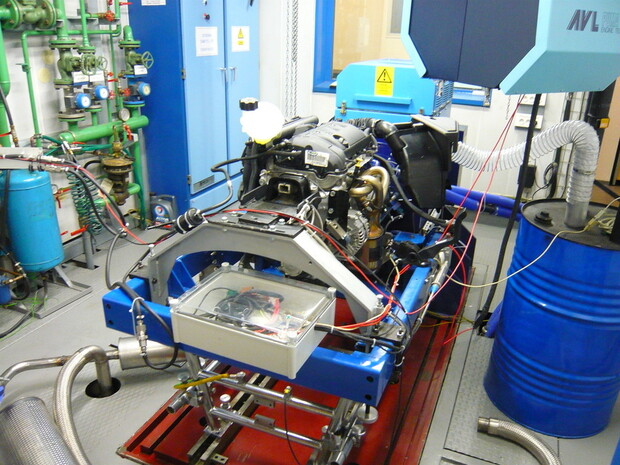Engine test bench

General presentation
The dynamic engine test bench allows steady-state and dynamic tests to be carried out to evaluate the fuel consumption and pollutant emissions of conventional or hybrid engines.
This equipment consists of an asynchronous machine with low inertia and a converter to control the machine in the four speed and torque settings.
The unit provides a peak power of 120 kW, for +/- 250 Nm and a maximum speed of 10000 rpm.
The installation is completed by a real-time emulation device developed in the laboratory.
Hardware in the loop emulation
This system is based on the principle of real-time emulation of vehicles and/or components.
In its hybrid configuration, it is composed of:
- a gasoline or diesel internal combustion engine
- an electric motor and its inverter
- a mechanical coupling
- a clutch between the electric motor and the internal combustion engine may be present depending on the hybrid configuration studied
- an energy storage system (battery or super capacitor)
A rapid prototyping system allows, thanks to the real-time version of the VEHLIB software, to emulate any type of vehicle and simulate it on real-life driving cycles.
Result examples
Stationary mode tests make it possible to scan the torque/speed domain of the engine and acquire its characteristic variables such as fuel consumption. For example, the following figure shows the specific fuel consumption map of a gasoline internal combustion engine:
Hardware in the loop application
Real-time emulation makes it possible to test varied vehicle configurations, from conventional vehicles to the most complex hybrid ones. This facility is frequently used to test different energy management laws based on standardized driving cycles or real-life use. The following figure shows an application on a parallel hybrid vehicle that has shown the fuel consumption gains obtained compared to the equivalent conventional vehicle:
The bench associated with a driving simulator
The coupling of the test bench with a driving simulator makes it possible to get rid of pre-recorded speed profiles and to immerse a driver in a virtual scene for a better consideration of human factors in the driving activity.